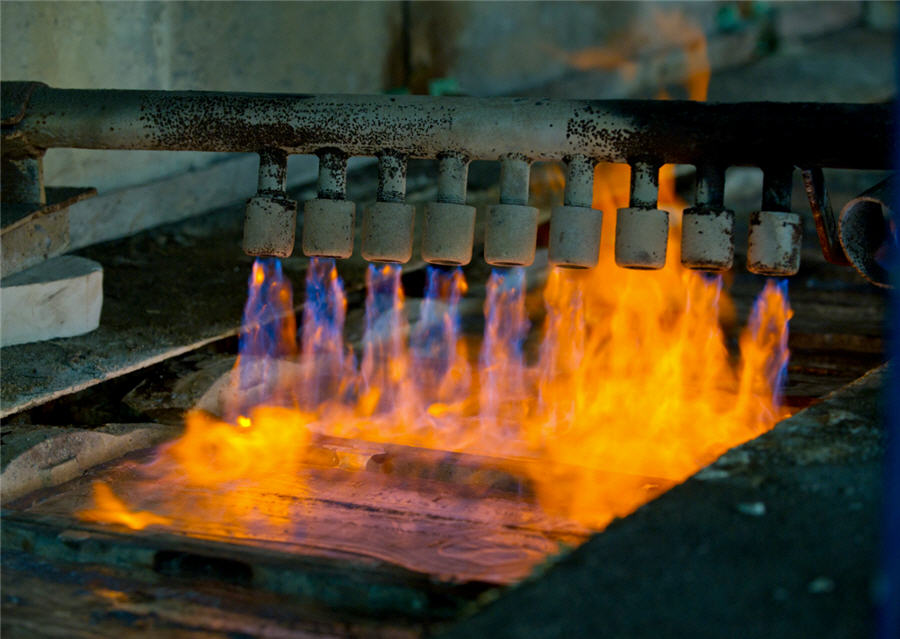
LONDON, Sept 24 (Reuters) – Belgian zinc producer Nyrstar issued a profit warning last week, citing “adverse market conditions”.
The company, which last year produced over a million tonnes of refined zinc, is feeling the pain from the dramatic price collapse of the last six months.
London Metal Exchange (LME) zinc hit an 11-year high of $3,595.50 per tonne in February. It is currently trading at $2,525 after touching a two-year low of $2,283 in August.
The supply response to two years of rising zinc prices is only just starting.
Retreat turned into rout as zinc got caught up in the broader LME sell-off, speculative players using the base metals complex to vent their trade war angst.
The resulting price implosion has opened a disconnect with zinc’s internal supply-demand dynamics.
Right now, the zinc price is suggesting that a wave of new mine supply is crashing along the supply chain. It isn’t.
Treatment charges, which is what companies such as Nyrstar receive for processing mined concentrate into refined metal, are still “historically low”, compounding the financial hit from the low zinc price.
Nyrstar, like other smelters, is being squeezed between a price that’s signalling feast and a raw materials chain that is only just emerging from famine.
The benchmark zinc treatment charges this year was set at $147 per tonne, the lowest headline level in a decade.
Spot treatment charges in China have fallen much lower as smelters compete to source material in a tight mined concentrates market.
That was expected to change this year as new and reconditioned mines responded to higher prices.
They are coming, but it’s taking time.
The International Lead and Zinc Study Group (ILZSG) estimates global zinc mine production actually fell by two percent in the first seven months of this year.
An eight-percent slump in estimated Chinese output dragged the global figure lower, but production in the rest of the world grew by just one percent over the same period.
Only one of the big three additions to mine supply is actually up and running.
MMG’s Dugald River mine in Australia entered production late last year and has ramped up successfully towards its 170,000-tonnes per year capacity with second-quarter production of 39,000 tonnes.
Australia’s New Century Resources, which is rehabilitating MMG’s old Century mine in Queensland, announced first production only in August. The company has indicated a 15-month timeline to full planned production of 264,000 tonnes per year.
Vedanta Resources’ 250,000-tonnes per year Gamsberg mine in Namibia is due to begin commercial production this month and will take 9-12 months to ramp up to capacity, the company said in its Q2 report.
These three mega mines are being joined by a cluster of smaller new mines. Nyrstar itself is ramping up its 30,000-tonne per year Myra Falls property in Canada with first production this quarter.
There are signs that spot treatment charges are reacting as this new supply starts arriving. Nyrstar noted that those in China have “increased notably” over the last two quarters.
But refilling a depleted global supply chain takes time and the process has only just started.
It is not just Nyrstar that is feeling the pinch between low treatment charges and a falling zinc price.
Chinese producers of refined metal are hurting just as much, witness the collective call for production cuts in June.
Zinc has fallen harder and faster than anyone in the zinc market expected. A gradual shift to supply surplus was expected. A trade stand-off between the United States and China wasn’t.
China’s official zinc production figures, particularly for mined output, are something of a statistical black hole, one which the ILZSG has navigated in the past by using an “apparent” calculation.
But its assessment that Chinese mined production has fallen sharply this year chimes with a broader analyst consensus that the zinc mining sector has been impacted by the multiple prongs of Beijing’s anti-smog campaign.
The refined production figures released monthly by the National Bureau of Statistics come with their own caveats but the trend is clear.
National output has been falling for three straight months, August’s 7.9 percent year-on-year decline marking a further acceleration of the trend.
August’s headline production of 431,000 tonnes was the lowest monthly figure since October 2012.
Even allowing for some statistical haze, the picture seems to be one of reduced raw materials availability and a resulting margin squeeze on smelters which has translated into falling output.
Nyrstar’s discomfort highlights the market stresses that have developed in zinc and other base metal markets since the fund selling began in early June.
The nuances of zinc’s internal balances have been lost in the noise of the escalating trade war between the United States and China.
As far as hedge funds are concerned, macroeconomic storm clouds trump specific market narrative across the base metals spectrum.
Speculative money is still heavily short of London zinc to the tune of 41,000 lots (1.025 million tonnes) or 25 percent of open interest as of last Thursday, according to LME broker Marex Spectron.
Friday’s announcement of lower-than-expected U.S. tariffs on the next targeted round of Chinese goods helped zinc bounce back above the $2,500 level but merely underlines to what extent it and the other base metals are beholden to the next presidential tweet.
The macro has accelerated the micro to such an extent that Nyrstar and other smelters now find themselves caught between the seemingly contradictory forces of low metal and high concentrates prices.
At least Nyrstar has some cushioning from its price hedging programme. It has locked in 166,000 tonnes of group mined production next year at a price of around $3,000 per tonne.
It’s a moot point as to how many other miners, particularly those bringing new operations on stream, have been so prescient.
Zinc’s current disconnects are hurting smelters. But unless the price can resist the cumulative weight of bearish funds and speculators, it could be the turn of zinc miners next.
(By Andy Home; Editing by Adrian Croft)